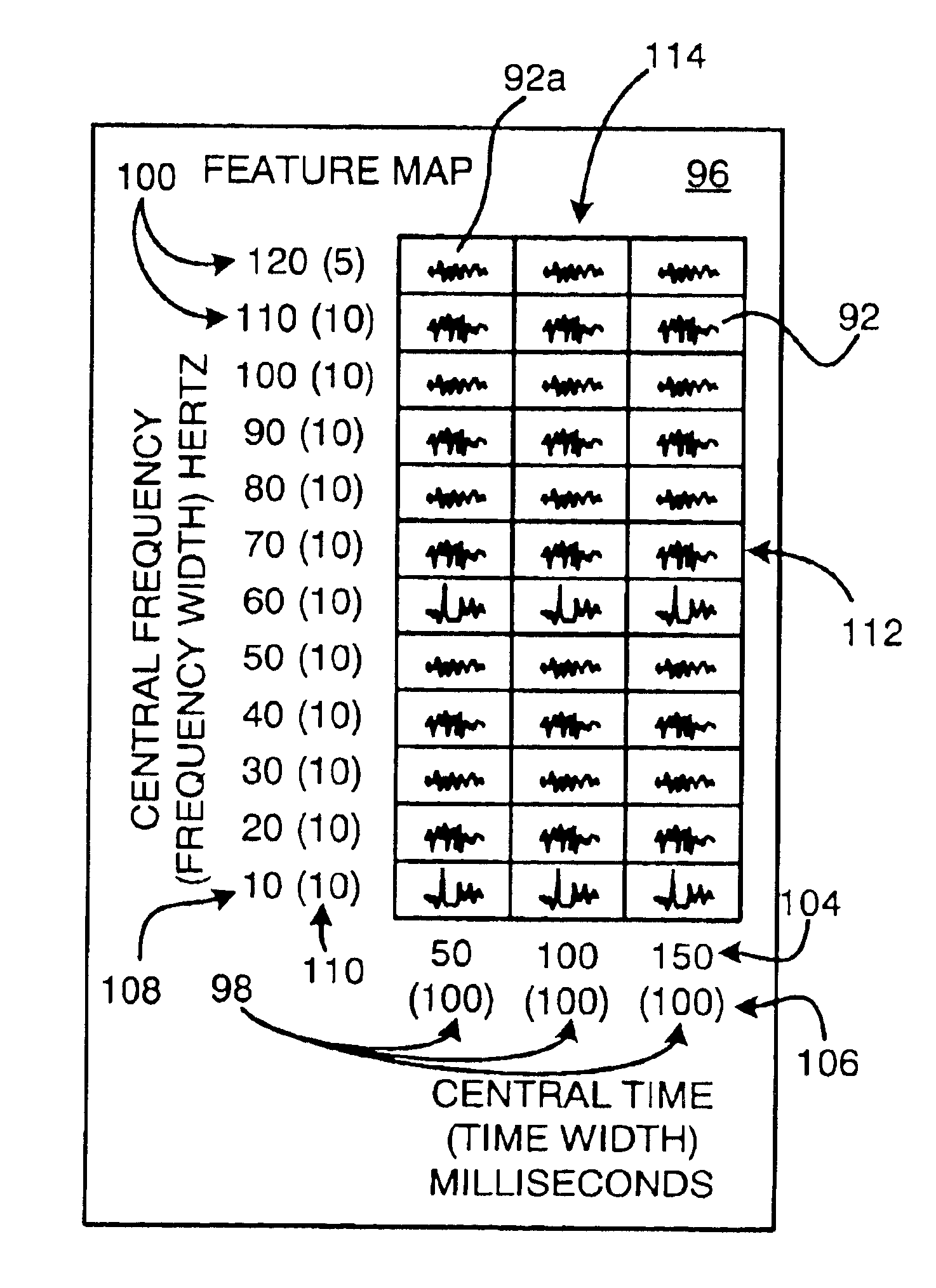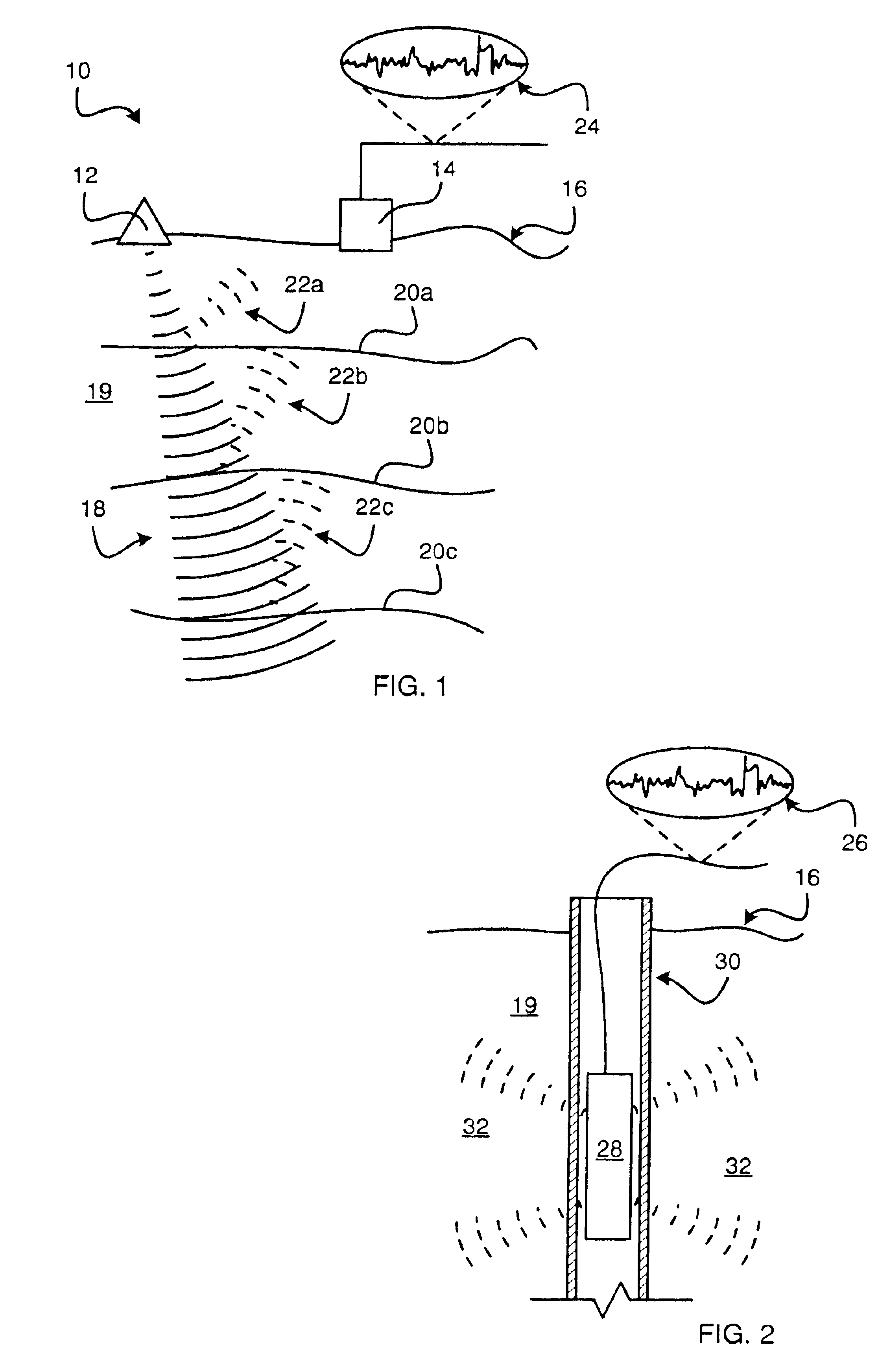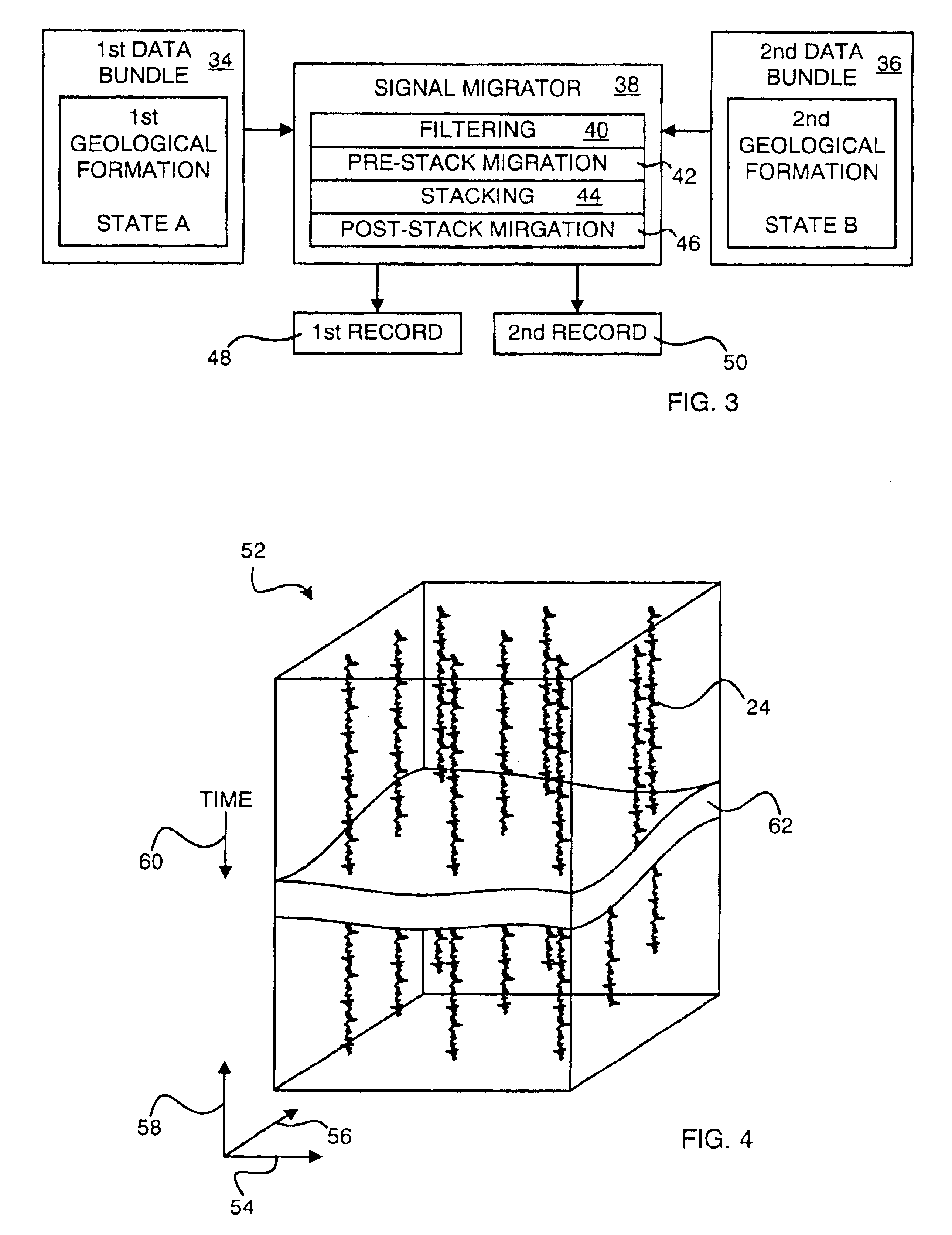Petroleum exploration and prediction apparatus and method
a technology of prediction apparatus and mineral deposits, applied in the field of signal processing, can solve the problems of difficult to generate accurate models of resource deposits, inconvenient use, and inability to accurately predict the location of mineral deposits, and achieve the effect of high classification accuracy
- Summary
- Abstract
- Description
- Claims
- Application Information
AI Technical Summary
Benefits of technology
Problems solved by technology
Method used
Image
Examples
example i
[0160]Referring to FIGS. 37-43, in the present example, signals 24 (post-stack gathers) were provided from a twenty square mile area of an operating oil field. The signals had previously been used to generate conventional seismic volumes illustrated in FIGS. 37 and 39. Twelve wells 30 were drilled based on the seismic volumes. As can be seen, all the wells 30 are positioned in areas 234 that the seismic volumes indicated are likely locations for oil.
[0161]Of the twelve bores 30 or wells 30, two resulted in oil wells 30a, 30b, two resulted in dry holes 30c, 30d, and two resulted in wet holes 30e, 30f (water filled). The states of the remaining six wells 30g, 30h, 30i, 30j, 30k, 30m were known to the owners of the oil field, but were withheld until processing in accordance with the present invention was completed.
[0162]As illustrated in FIG. 41, selected signals 24 corresponding to each of the wells 30 were provided for processing. The number 236 of signals 24 provided for each well 3...
example ii
[0169]Referring to FIGS. 44-49, in the present example, traces (post-stack gathers) were collected from an eight square mile area of an operating gas field. The data was used to form the conventional seismic volume illustrated in FIG. 47. Five wells 30 were drilled based on that seismic volume. As can be seen, all the wells 30 are positioned in areas 234 that the seismic volume indicated as likely locations for gas.
[0170]Of the five wells 30, well one 30a resulted in a gas well and well two 30b resulted in non-producing wet hole (producing water not gas). The states of the remaining three wells 30c, 39d, 30e were known to the owners of the gas field, but were withheld until completion of processing in accordance with the present invention.
[0171]As illustrated in FIG. 44, selected signals 24 corresponding to each of the wells 30 were provided for processing. The number 236 of signals 24 provided for each well 30 ranged from 431 to 606. The signals 24 were processed by an event contra...
example iii
[0179]Referring to FIG. 50, in the present example, signal 24 was provided from a first geological formation 19 having gas production rates above a selected economic value and a geological formation 19 having gas production rates below a selected economic value. Epochs 68 corresponding to the first and second geological formations 19 were used as learning epochs 72 and processed by a learning system 76 in accordance with the present invention.
[0180]After processing, the learning system 76 produced a separation key 80 effective to separate geological formations 19 having gas production above a selected value from geological formations 19 having gas production below a selected value. The separation key 80, illustrated in part in FIG. 50, instructs that each epoch 72 be divided in both time and frequency space. In time space, each epoch 72 may be divided into four time segments 98. The time segments 98 may be weighted with Gaussian distributions 102 centered at 25 ms, 50 ms, 75 ms, and...
PUM
 Login to View More
Login to View More Abstract
Description
Claims
Application Information
 Login to View More
Login to View More - R&D
- Intellectual Property
- Life Sciences
- Materials
- Tech Scout
- Unparalleled Data Quality
- Higher Quality Content
- 60% Fewer Hallucinations
Browse by: Latest US Patents, China's latest patents, Technical Efficacy Thesaurus, Application Domain, Technology Topic, Popular Technical Reports.
© 2025 PatSnap. All rights reserved.Legal|Privacy policy|Modern Slavery Act Transparency Statement|Sitemap|About US| Contact US: help@patsnap.com



